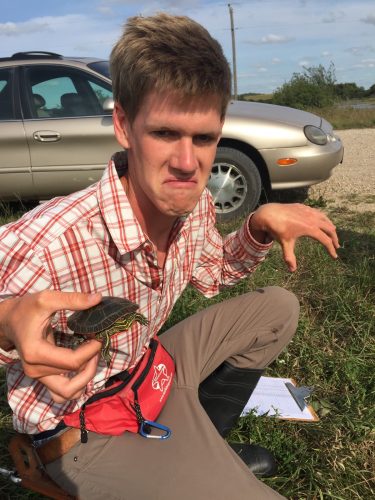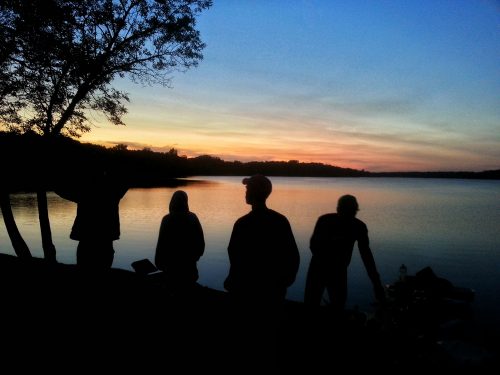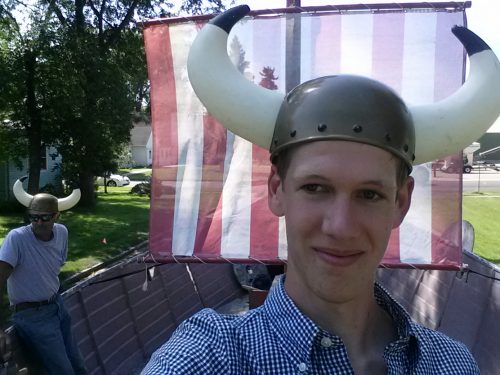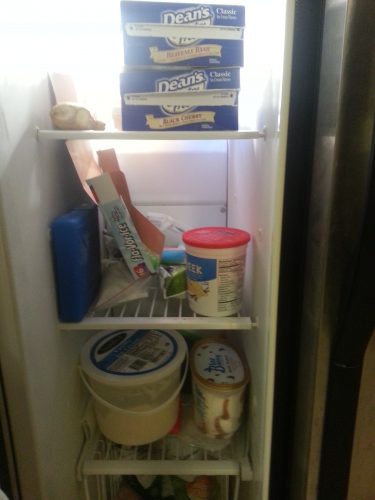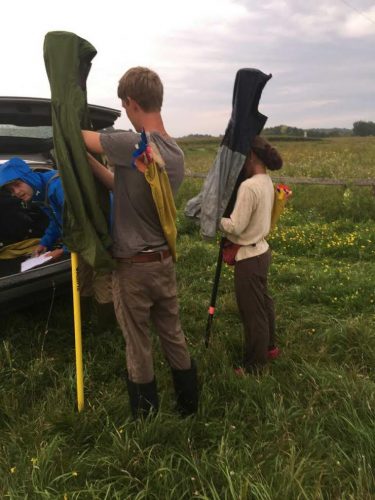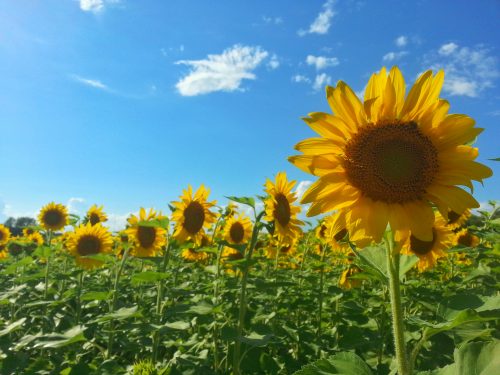|
|
Part 1. I couldn’t stay away from the Echinacea Project too long. As I’m positive you want to hear both about my poster that I will be presenting at MCMS tomorrow at the University of Chicago and my adventures in Chicago, I will share both. As I arrived at the airport to fly to Chicago, I realized I had forgotten my cell phone. I thought to myself, I lived most of my life without a cell phone, I can do it another day. After arriving in Chicago, I had thankfully packed a dollar in quarters, so I was able to use a pay phone (yes, those still exist) to call a cab. While I did struggle to understand the technology, I was finally able, after spending my only dollar in quarters, to procure transportation to the Chicago Botanic Gardens. I was left penniless, phoneless, and with only a laptop and my knowledge of Chicago (this, by the way, was absolutely nil). After making a successful rendezvous with the team, I enjoyed a lunch and tour of the lab. It was great to see everyone again.
Part 2. After figuring out the best way to get to my destination at the University of Chicago, I jumped on the purple line, confident that, after a quick jaunt on the green line, all I’d have to do was walk a block or two to the hotel, where dinner awaited me. I hopped off the train, and quickly realized that the area had been highly developed since the last google street image had been taken, unless my memory of the picture failed me. Ah well, I thought, I wrote down the street that will get me to my hotel, it’s just east of here. The street just east was not the correct street. Maybe the map I saw was just wrong. By the next street, I knew I was in the wrong place. Thankfully a friendly man suggested a bus that would take me five miles to the east, where I thought I was getting off. Yes, I had taken the wrong train. All was well and good until I hopped on the bus and realized that I was penniless, with no money for a fare. Again, the bus driver was a greatly friendly man, and I rode the bus without a fare. Sailing was smooth from there on out.
Tomorrow I will present my findings on how edge effects play a role in the style persistence and pollen limitation of Echinacea at the Midstates Consortium for Math and Science. Style persistence decreased as plants were farther from habitat edges, demonstrating a spatial pattern in pollination. Attached is my poster. stylepersistenceedgeposter
Off to share a room with someone I haven’t met yet. Day in the life.
 No explanation needed. Great to see y’all again.
Well, it’s been a quiet week in Kensington, Minnesota, my hometown for the summer, out there on the edge of the prairie. It was my last day along with Will’s today. We harvested sideoats grama grass throughout the roadside along p2 along with p1. This was a rather meditative activity, since the temperature and wind speed was about the most pleasant we experienced all summer. We had an analytical lunch, discussing the analysis of my independent project and best way to harvest sideoats grama in p1. Due to lack of data, we could not decide whether it was best to walk along rows or pick an optimal path to best harvest. We continued harvesting p2 and remnants during the afternoon. After work we ate some great chocolate cake, compliments of Stuart, and discussed the optimal size and shape of a goat fence along with optimal herd size for eating buckthorn. Stuart is headed back to Chicago tomorrow, and he left Scott and Amy with a parting blessing to flush the toilet as much as they want. What a gift.
All jokes aside, it was, after all, my last day, so I’ll leave you with some of my reminiscing about the summer. Throughout the summer, I had the opportunity to get to know some of the inhabitants of Kensington and the surrounding area. If any of you have listened to Prairie Home Companion, you’ll be familiar with Lake Wobegon. Kensington could be this town. It has a baseball team, a Lutheran and Catholic church, a bar, a cafe and lots of good people. The people I got to know were kind and always ready to offer me spare bike parts or food. They were excited to give me the history of town hall and the surrounding countryside. If I could give advice to future team members, I would suggest that they seek to make friends with the residents of Kensington. Who knows, they might get to become vikings for a day too. I’ll miss the town, the people, the prairie and Team Echinacea.
Post Script: If you’re wondering where the title comes from, it’s another great one liner from Scott. I can’t quite remember its context, but it is a wise proverb.
 I’m a turtle?  Team Echinacea
An inevitable deterioration toward uniformity. Echinacea and tags becoming one with the soil. This may be stretching the meaning of entropy, but there were a surprising number of Echinacea heads gone and many tags were nowhere to be seen. So many heads were gone in Staffanson that we began to wonder if there had been some busy rodents, deer or humans. Anyway, you may be accustomed to hearing that we did demo at Staffanson, and today was no different. We spent the entire day as demographers, but at last we finished with all 1200 some plants (500 today)! Like soldiers coming home from a war, we were both joyous and perplexed as to what more there was to be done. We had spent the coldest day of the summer, the buggiest day, one of the warmest and some of the longest days doing demo at Staffanson. We soon realized there was much more to be done. In a world without entropy, we could hope to harvest, recheck p7 and do demo at Aanenson, KJ’s and North West of Landfill. We’ll try, but stand by for updates on what we can accomplish in the next two days. After work we finished both the root beer and the ice cream, so no more floats for us. They were pretty musty (scrumptious).
 We march out of battle, victorious
Amy and Scott started our Sunday off by continuing to monitor Lea’s transect at Staffanson. Thankfully, the mosquitoes failed to carry them away. Donnelly, a town near Morris, was having a threshing bee and parade this weekend, and I was invited by the Kensington Lions Club to become a viking for afternoon. I quickly accepted, since, given my non-Scandinavian heritage I might not have this opportunity many times. After learning much about the history of the local farms and farmers during the drive, I embarked upon the knarr for our passage through the streets of Donnelly. For those of you who may not be vikings or have not used a knarr for seafaring purposes, it is a cargo vessel used by the Norse for cross-Atlantic travel. I believe the specific knarr I was on may have been used to carry the runestone to its resting place in the true home of the runestone, Kensington. Anyway, our voyage safely completed and the candy handed out, I returned to K-town, my viking duties over. Scott, Amy and I then went swimming in Elk Lake where we met Abby and all her new college buddies. We stocked up on food and are now preparing for some of Scott’s signature Spanish omelets. Stay tuned for more musty news about death by mosquitoes at Staffanson tomorrow.
 A fierce, clearly Norse, Viking warrior.  Update: Can you count the number of ice creams in the fridge? We think there aren’t enough. Leave your guesses, comments, suggestions or concerns below.
Today was a continuation of harvesting. Instead of harvesting heads in experimental plots, we harvested Echinacea heads from many of the remnant sites. At every site we visited, we collected five randomly selected heads as well as the most and least isolated heads and the first and last to end flowering. We were surprised at the number of heads that were ready for harvesting yesterday, but today we had an even higher percentage of heads with ripe achenes. Our rough estimate was around 50% of heads harvested. We spent the afternoon rechecking P9 for any missed plants, and Scott proved himself the musty champion of searching with around 15 Echinacea found.
After work we had some great rootbeer floats, while discussing the rest of the week. Stuart is headed to Chicago, so it will just be us younger folks for the rest of the week. Thankfully, he left us with some sage advice to help us survive the week, “Work hard, but don’t forget the ice cream.” I believe this is advice by which to live.
Since I can’t think of much else to write, I’ll leave you with an image generated through my independent research. I want to know if there is a relationship between the distance of a plant to the nearest habitat edge and reproductive fitness. I recently completed the first step of assigning distance to the nearest edge to each flowering plant. Below is a visual depicting the edges of all remnant sites (also included because I didn’t remember to catalogue any of today’s events with photographic evidence).
Efficiency and good data are two of our major goals at the Echinacea Project. Today we achieved the efficiency part, and hopefully while we were efficient we collected some good data. We started off the day with seedling refinds in big batch. After our work today, there are only fifteen more segments, and we’ll have hopefully found all the surviving plants in P1. Scott calculated we have somewhere around a 0.675 % chance of no rain, however we realized our luck was quickly running out. We decided to head away from the rain to the east and attempt to do total demography at East of Town Hall, however as soon as we put the GPS together it began raining. After eight plants, we called it quits and headed back for some computer work. I was able to finish my code for easily calculating how far a plant is away from a habitat edge.
Lunch was eaten in cold silence with a few sparse comments on how 68 degrees shouldn’t and usually doesn’t feel so cold. Roxy lighted the mood by taking out her squirrel jerky, which she had been saving for her last full day in Minnesota. This prompted comments as to why someone would eat something that has been dead that long. Stuart didn’t know why, but he in turn wondered why people would drink kombucha. This elicited discontented mumblings from our resident kombucha lovers. I’m still in the dark as to what exactly kombucha is, but I know it’s alive and I generally don’t like to drink live things.
In the afternoon we completed demography of East of Town Hall, Nessman, Bill Tom’s Gate, Landfill and Around Landfill. Sadly we learned that today was Gretel’s last day. We had so little warning of this that Will compared it to ripping of a bandaid: painful and quick. We eventually had to say goodbye to Gretel, Hattie and Roxy. I’m still unsure of how we’ll sync the visors without Gretel, but we’ll have to manage. I hate to leave you on that sad note, but I must.
 The refs are reviewing the stake files. Looks like they’ll be delaying the demo due to rain.
I’ll get to the topic presented in the title, but first I’ll give you a quick recap of our day in The Birthplace of America. Laura left this morning (the unearthly hours of the morning), and we will miss her and her stick shift driving skillz. We spent the morning relaxing. I cheered on USA in the Olympics, specifically in sailing. I promise it’s more interesting than it sounds.
As you can tell, there wasn’t going to be much of note to write about today. Until we experienced an enlightening dinner conversation, I was going to tell you about fridge phenology. Yes, with only four Echinacea still flowering we are missing it. But that was before our local expert on fiber, Lea, began what was to be a life changing conversation.
Lea suggested that eating the recommended daily fiber intake was nigh impossible, so I looked up my daily suggested fiber intake. You too can do this on the USDA website. It recommended I eat 38 grams of fiber a day. It was not until later I realized how much this was. Helpfully, the USDA also suggested that I have over 50 grams of protein a day and very surpr
isingly suggested I have 0 grams of arsenic in my diet. Being the curious budding scientists we are, we played a game called guess the amount of fiber a vegetable contains. We were having braised leeks for dinner, so we quickly found out that your average 89 gram leek contains only 1.6 grams of fiber. If you do the math, I would have to eat over 23 leeks a day to satiate my fiber needs. You must be thinking, “Wait, there must be a better way to get my fiber.” I’m sorry to say after searching the fiber content for over 5 vegetables (a massive sample size if you would like my opinion), nothing had a great amount of fiber. An average medium size potato (213 grams to be precise), contains 4.7 grams of fiber while a large potato (369 grams) contains 8 grams of fiber. That is, as Scott would say, some basic math. This seemed like a lot to me until I realized I would have to eat over eight potatoes a day to satisfy my needs. That’s 1722 grams of potatoes or, for those of you who like the imperial system of measurement, 3.7 lbs of potatoes a day. We now arrive at the conundrum of our discussion of nutrition. How does one eat 23 leeks in a day and still manage to eat enough protein? We tried to discover this secret of nutrition, but then realized we would be better off just eating some ice cream and ending our day on a high note.
 A local sunflower patch
I’m sure we left y’all sitting at the edges of your seats waiting for an update on the pizza, but before we get there, I would like to offer a complaint. It has come to my attention that the loon was given 1 point, while I was given zero. It is my opinion that the judging was rigged and the loon bribed the judges. I see no grounds for my loss. But I’m sure you want to hear about our pizza, so no more of our slight squabbles. After I took a short swim in the refreshing Annie Battle Lake, we headed off to Battle Lake for some pizza. The food was great after a lackluster breakfast and lunch. Much to the surprise of our waitress, Laura managed to ‘drink’ (put into a Nalgene) four glasses of water. Next we went to the local ice cream shop. While looking for a spot to sit, Scott lost his upper scoop to the road. This was much to the amusement of a spectator who laughed at the hapless Scott. Not to be at a loss of ice cream, Scott picked up his scoop and enjoyed it with some extra vitamin P (P for pavement).
We spent the rest of the evening enjoying the great campsite. Laura and Amy went for a swim at sunset, I built a fire and everyone scratched their chigger bites. Those little guys are quite persistent. After a great trip, we returned to K-town this morning. We are prepared to continue measuring plants and do flowering phenology as the number of flowering heads dwindles.
 Peaceful sunset from our campsite
I am excited to present to you my summer 2016 research proposal. While previous research has shown that isolated Echinacea plants and populations experience reduced reproductive fitness, we have not looked at what influence edge effects may have on Echinacea populations. Findings presented in Ison and Wagenius 2014 showed that plants in P1 experienced slight edge effects on seed set. My research this summer will use style persistence data collected from all remnant sites and quantify the relationship between distance of an Echinacea plant from a habitat edge and average style persistence. This will help us understand if fragmented populations are being harmed by yet another factor. Hopefully you find this topic as interesting as I do.
JamesEckhardtProposal2016
 It was supposed to be sunny and hot. Remember what the forecast was for today? As I sat in the cold drizzle with goosebumps looking at a gray sky, I wished for the warmth that was predicted for the day. We started off early again this morning with pollinator observations. Early on in this endeavor, we realized that pollinators did not enjoy the weather, and many of us observed more lightning bolts than bees. Late in the morning, a few brave bees made their way to Echinacea heads to scavenge for pollen. By lunchtime many of us were still marveling at the coolness of the day. I believe it was about the time it was announced that we would prepare to head to P1 that we were suddenly transported to the Amazon rain forest.
The dappled light from the sun shown through a steamy haze while heat shimmered off the soggy tree leaves. We left our outpost at the Hjelm house and began our journey through the jungle to our research site in P1. Our object was to finish searching for and measuring INB2 plants, a project that had begun yesterday. We trudged through the dense underbrush. The air was close, and a hush fell over the column as we reached a clearing. It was our research site. We split into smaller groups to measure plants more efficiently, and made our way through the dense mass of damp grasses. Throughout our research, the quiet was disturbed by the call of Roxy, a doglike mammal native to the area. As the day progressed, the heat became more oppressive. It was only made worse by the constant threat of mosquito bites and ticks. By 4:00 PM we had made extensive progress and finished measuring INB2 plants. We treked back through the forest to our base.
Anyway, after that adventure, Scott, Alyson, Lea and I again swam in Elk Lake, which was immensely refreshing after the hot day. Amy stayed back and made some great lasagna for dinner. Tomorrow is another early start. Stay tuned for Xtreme Phenology tomorrow.
|
|


